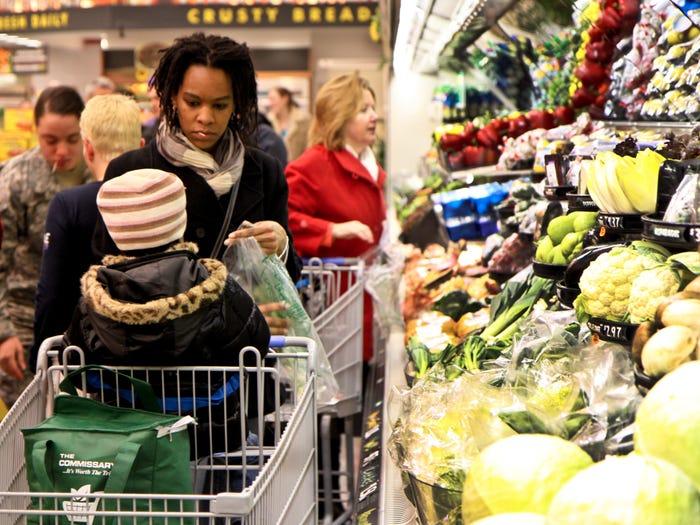Empower survey reveals 87% of shoppers are “fed up” with rising prices. One in four respondents refuse to pay more for their regular items.
Baby boomers show the strongest resistance to price hikes. Will this consumer pushback force retailers to reconsider their pricing strategies?
The Dollar Tipping Point: Too Much to Bear?

A single dollar increase could push many shoppers to abandon favorite products. 33% would drop coffee from their list if prices rise by $1.
One in five Gen X shoppers would forgo bread at a dollar increase. Could this price sensitivity reshape grocery store inventories?
Generational Divide: Who’s Most Price-Sensitive?

Different generations show varied price tolerances for specific items. 20% of Millennials won’t pay more for snacks.
Gen Z shoppers are most sensitive to produce price hikes. How will retailers cater to these diverse generational preferences?
Shrinkflation: Less Bang for Your Buck?

75% of shoppers believe they’re getting less as prices rise. 79% have noticed smaller portions in packaged goods.
Nearly half report a decline in product quality. Can consumer awareness combat this stealthy form of inflation?
Adapting to Inflation: New Shopping Strategies Emerge

Over 50% of shoppers have switched to store brands. One-third actively seek more coupons and deals.
Consumers explore alternative shopping methods to save money. Will these new habits persist even if prices stabilize?
Dynamic Pricing: Salvation or Deception?

37% of shoppers express interest in dynamic pricing systems. Walmart and Kroger implement digital shelf tags for flexible pricing.
Critics fear potential for sudden price hikes. Could this technology actually benefit budget-conscious consumers?
Brand Loyalty: A Casualty of Rising Prices?

Price increases turn shoppers away from once-favorite brands. Consumers prioritize budget over brand preferences.
National brands face increasing competition from store alternatives. How can established brands maintain customer loyalty in this climate?
Budgeting Squeeze: Essentials vs. Luxuries?

Shoppers report allocating more budget to essential items. Discretionary spending takes a hit as grocery costs rise.
US households spend an average of $5,259 annually on groceries. Will this shift in spending patterns impact the broader economy?
Optimism Amidst Inflation: Price Drop on Horizon?

Over 25% of survey respondents expect prices to decrease by year-end. Consumer sentiment plays a crucial role in economic forecasts.
US inflation rate stood at 3.2% in July 2023. Could positive expectations become a self-fulfilling prophecy?
Future of Grocery Shopping: A New Normal?

Consumers adapt shopping habits in response to economic pressures. Retailers explore technology and pricing strategies to retain customers.
The US grocery market is valued at $811 billion in 2023. How will the industry evolve to meet changing consumer demands?


